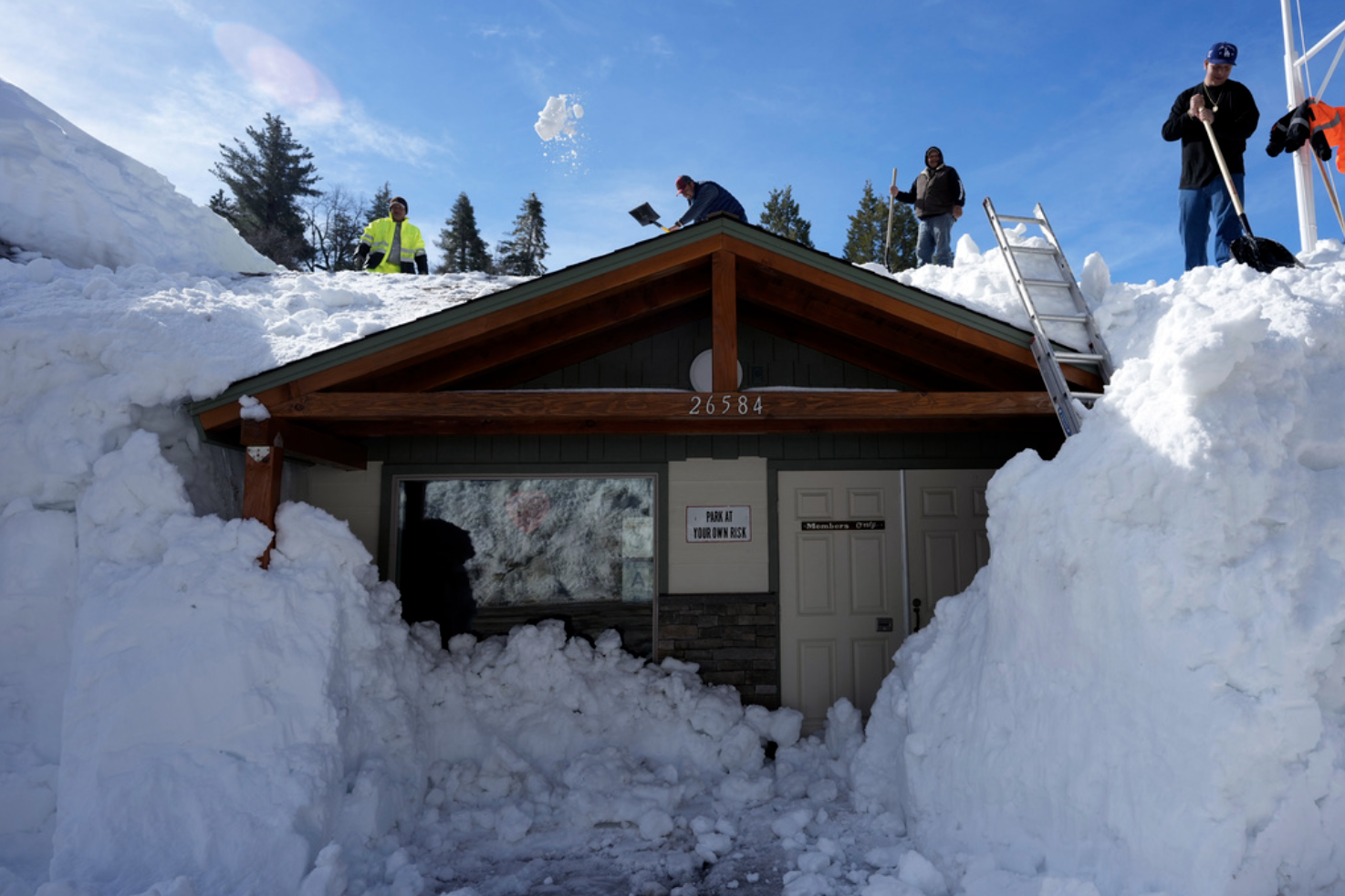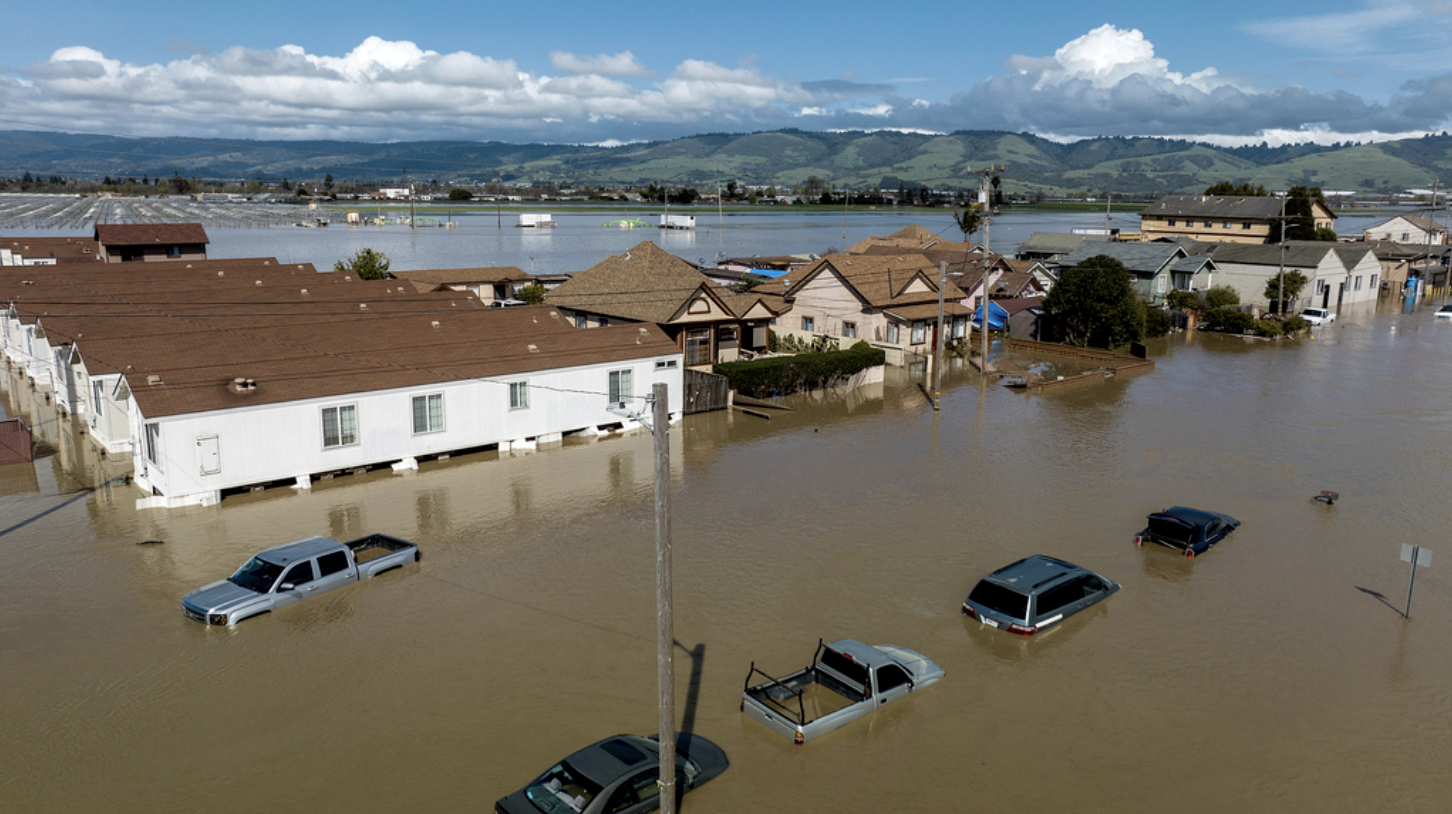[Op-Ed] Why Rainy Seasons Don't Mean the End of a Drought
Heavy snow in Rimforest, California on Mar. 8, 2023. Source: AP Newsroom/Marcio Jose Sanchez
This season in California has experienced an unusually wet winter following the driest three years on record. Despite the sudden increase in rainfall this year, Governor Gavin Newsom lifting certain restrictions and claiming the drought is “mostly but not completely” over, water supply concerns do persist. Atmospheric storms have engulfed California this winter, leading to a buildup of snow packs and reservoirs being replenished. Cycling between drought and rainy seasons is not uncommon, but as climate change exacerbates weather patterns extreme weather events make it difficult to prepare for and control imbalanced precipitation.
Despite relieving Californians of some of the effects of a severe drought, the unusually rainy season they have been experiencing has also had negative effects. Severe flooding and damage to infrastructure and trees have been major consequences of the unusual rain. Also, the growing of a Sierra Nevada snowpack has been responsible for snowing in mountain communities and posing flood risks when it melts in the summer. Additionally, the heavy influx of rain has still not been very helpful in replenishing California’s underground aquifers, which grow quite depleted during their dry spell. Difficulty redirecting the water into the underground basins means the wet season is not offering as much of a counterbalance to the drought as one would hope.
California is only one example of an area seeing heightened cycles of extreme weather patterns, leading to longer, more intense periods of both drought and rainfall. This has severe consequences, resulting in issues from food supply to full-blown humanitarian crises. Recent research by NASA found that while weather events such as El Niño may be partially responsible for increasing disparities in water storage on land, increasing global temperatures have the highest correlation with more extreme weather events. Between 2015-2021, when temperatures recorded made up seven of the warmest nine years on record, extreme wet and dry events occurred four times per year compared to just three in the previous thirteen years.
Houses in Monterey County, California underwater following a particularly wet winter season. Source: AP Newsroom/Noah Berger.
The latest IPCC Synthesis Report also discusses the way climate change harms the most vulnerable nations and communities the worst and is important to consider when examining how increasing cases of weather “whiplash” such as the one in California will be putting these populations at the greatest risk. Communities with lower climate resiliency and poorer infrastructure face a much greater likelihood of experiencing catastrophic effects of weather cycles and droughts or floods that are only increasing in severity.
Extreme weather patterns exacerbated by climate change are only continuing to worsen, and we can expect to experience increasing instances of weather whiplash like those seen this year in California and all across the globe. Other regions including Africa, Central America, South Asia, and Australia that all cycle through short and long-term occurrences of drought and heavy rain can all expect to suffer similar issues of worsening floods, infrastructure damage, and displacement. While for some, a rainy season in California may indicate a positive outlook towards a future free from drought, it rather suggests a future of imbalanced precipitation cycles and weather instability likely to cause more harm than good.


